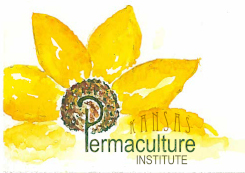[Revised 1/9/16 to add November and December income]
When people ask about our tenth of an acre, I frequently say, "We call it an urban farm, but it's more of a market garden." That's because for the last six years (2009-2015), we've brought essentially all of our produce to the farmers' market. What doesn't sell, we eat ourselves or preserve. We're going to try a different strategy in 2016, for a number of reasons, and I feel we owe our customers an explanation.
First, selling a small quantity of a large variety of items may be good permaculture, but it has not been a profitable strategy for us, nor apparently does it work well for others. The vendors who do well at our market have a large quantity of a small variety. People line up at the sweet corn stand to buy their sweet corn, or at the tomato table to buy their tomatoes, or at the trailer full of pumpkins to buy their pumpkins; they don't come to our table to buy our one pumpkin or our one little tub of okra. From a marketing perspective, less variety is evidently easier for customers to understand and appreciate. There are still good ecological reasons to grow lots of things, but an economic case cannot be made for bringing small quantities to market.
| pendants | $87.75 |
| scones | $83.50 |
| T-shirts | $44.00 |
| mint, chocolate, dry | $41.00 |
| tomatoes, cherry, fresh | $37.00 |
| cookies | $34.00 |
| sock pigs | $34.00 |
| sock cats | $29.00 |
| bottles, melted | $26.60 |
| sock monkeys | $25.00 |
| sock dinosaurs | $25.00 |
| Aloe plants | $20.40 |
| necklaces | $20.00 |
| lemons | $18.00 |
| mint, chocolate, fresh | $16.50 |
| mulberries, fresh | $15.00 |
| berries, mixed, fresh | $14.00 |
| basil, fresh | $12.50 |
| carrots | $11.00 |
| strawberries, fresh | $10.50 |
| surprise lily, bulbs | $10.00 |
| sock dog | $10.00 |
| mint, strawberry, dry | $10.00 |
Our 25 best selling items are shown in the table at right. This is gross profit, not taking any costs into account (which would disqualify the T-shirts, which we sell at cost), but notably, the sock pigs and melted bottles are the cheapest of all the crafts to make, requiring the least materials & labor of all the crafts. The mint and cherry tomatoes are also much easier to grow well and harvest than carrots, greens, corn, or beefsteak tomatoes. Aloe plants are trivially easy to propagate compared to other houseplants that nobody wants. And we'll get more mulberries every year whether we want them or not! The thing is, we offered fifty one other types of things for sale and made less than $10 on each of them -- and only 25% of total sales, for a lot more work!
(In order of popularity, the other items we sold were: beans, green; sage, dry; tea, by the cup; muffins; garlic; mint, strawberry, dry; arugula; earrings; okra, fresh; parsley, dry; cilantro, fresh; guitar picks; horseradish; mulberries, frozen; parsley, fresh; thyme, dry; mint, strawberry, fresh; sage, fresh; philodendron; spinach; kale; raspberries, black, fresh; sock snowman; tyfon; sunchokes; cayenne, dry; lambsquarters; lettuce; peas, sugar snap; strawberries, dry; iris plants; onion, wild; basil, dry; lovage, dry; nasturtium greens; onion, bunching; onion, dry; poppy seed; radishes; spider plant; stevia, dry; stevia, fresh; yarrow seed; fire starters; cauliflower greens; chive blossoms; coriander; fennel; garlic scapes; greens, mixed cooking; herbs, dry, last year's)
 Second, there's more money to be made at market selling crafts and baked goods than produce. The graph at left paints a clear picture of what we have experienced: our revenue goes down during the growing season! The higher points are all days when we sold Jessie's crafts; in particular the highest point was not even at the regular farmers' market, but at the Pioneer Bluffs Fall Festival, where we sold three stuffed animals, two pendants, and a T-shirt, along with a trivial amount of mint and tomatoes. I don't mean to imply that making money was our only goal in selling at market, but it's hard to justify the amount of labor involved in growing the crops, harvesting, and then sitting for hours in a parking lot for just $30 average gross sales.
Second, there's more money to be made at market selling crafts and baked goods than produce. The graph at left paints a clear picture of what we have experienced: our revenue goes down during the growing season! The higher points are all days when we sold Jessie's crafts; in particular the highest point was not even at the regular farmers' market, but at the Pioneer Bluffs Fall Festival, where we sold three stuffed animals, two pendants, and a T-shirt, along with a trivial amount of mint and tomatoes. I don't mean to imply that making money was our only goal in selling at market, but it's hard to justify the amount of labor involved in growing the crops, harvesting, and then sitting for hours in a parking lot for just $30 average gross sales.
Third, I tried scaling up the garden this year, and it was not a success. I annexed a neighbor's yard for growing space and hired a helper. The increased volume of saleable goods was not measurable, but the labor cost was. I'm sure I could have done a better job of scaling up, but still, it was not an encouraging experiment.
Finally, and the deciding factor, I've been elected president of the Emporia Gardeners of America for 2016, and I'm betting I will have more success promoting permaculture through that channel than I have as an urban farmer. Having a table for the garden club at the market is one of my strategies to try to build interest in the club. That means at least some weeks I'll be selling produce and plants at the club table, which in turn means the income will go to the club, not to us. Jessie may want to continue selling crafts and baked goods, but we can't keep calling our garden either a market garden or an urban farm when we're no longer selling produce.
In any case, it's been a good run and a learning experience. We are very grateful to our loyal customers for keeping us going as long as you did!
[2017 update: we resumed selling produce this year, because the garden club went defunct, and we're so used to selling at market that we've just kept coming. Besides, our garden produces some things in greater abundance than we can use, notably garlic.]
- Inicie sesión para enviar comentarios





Comentarios